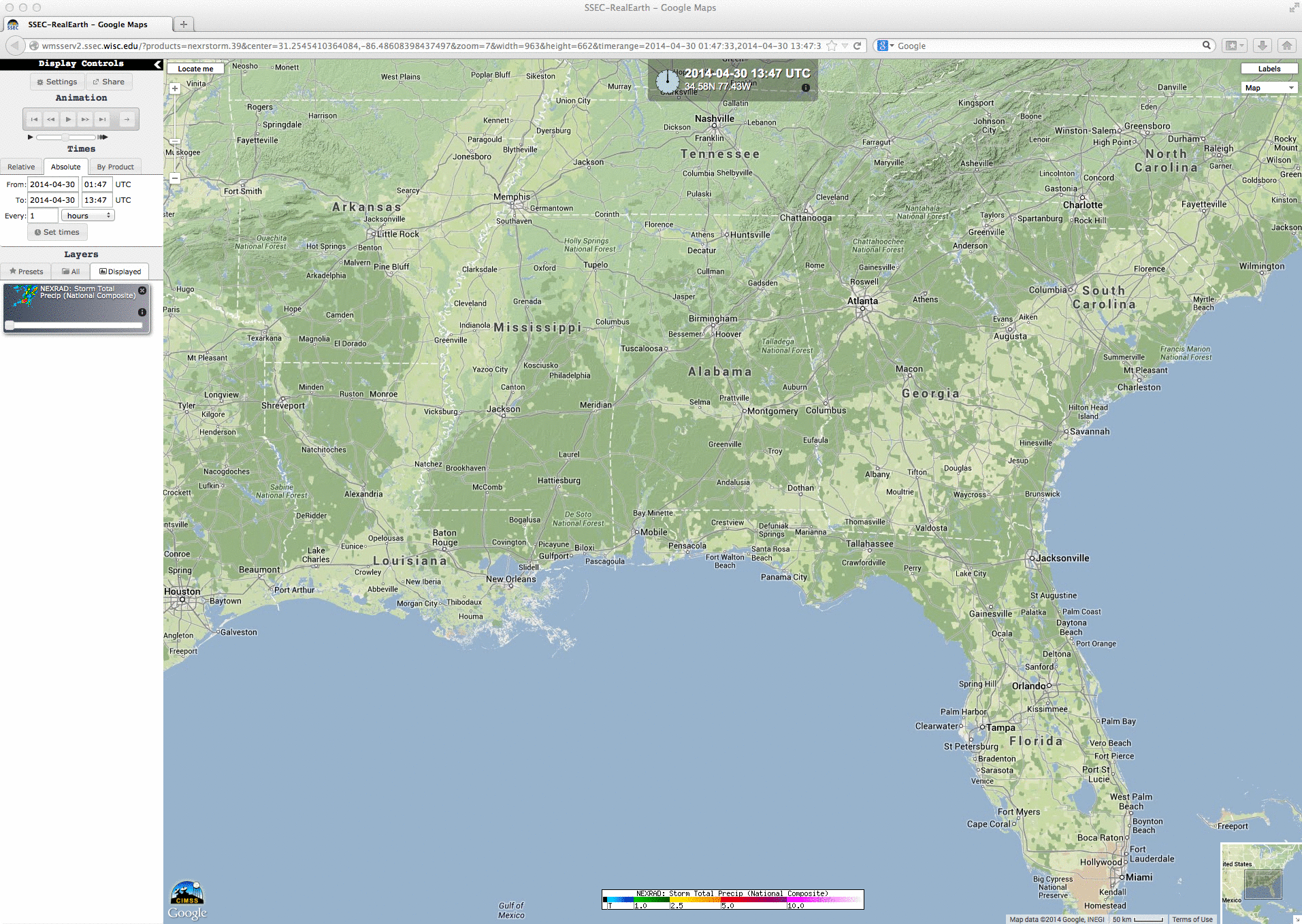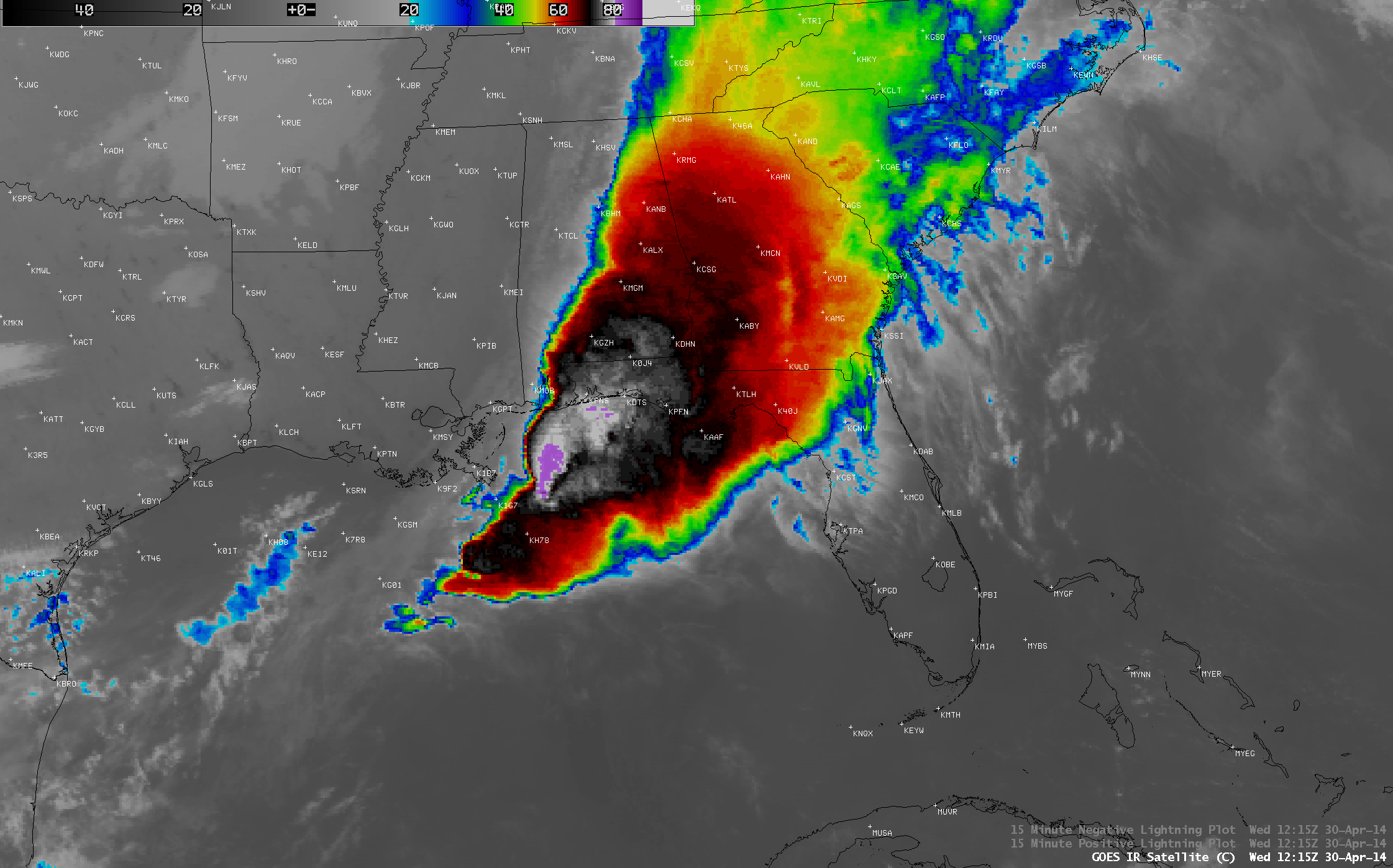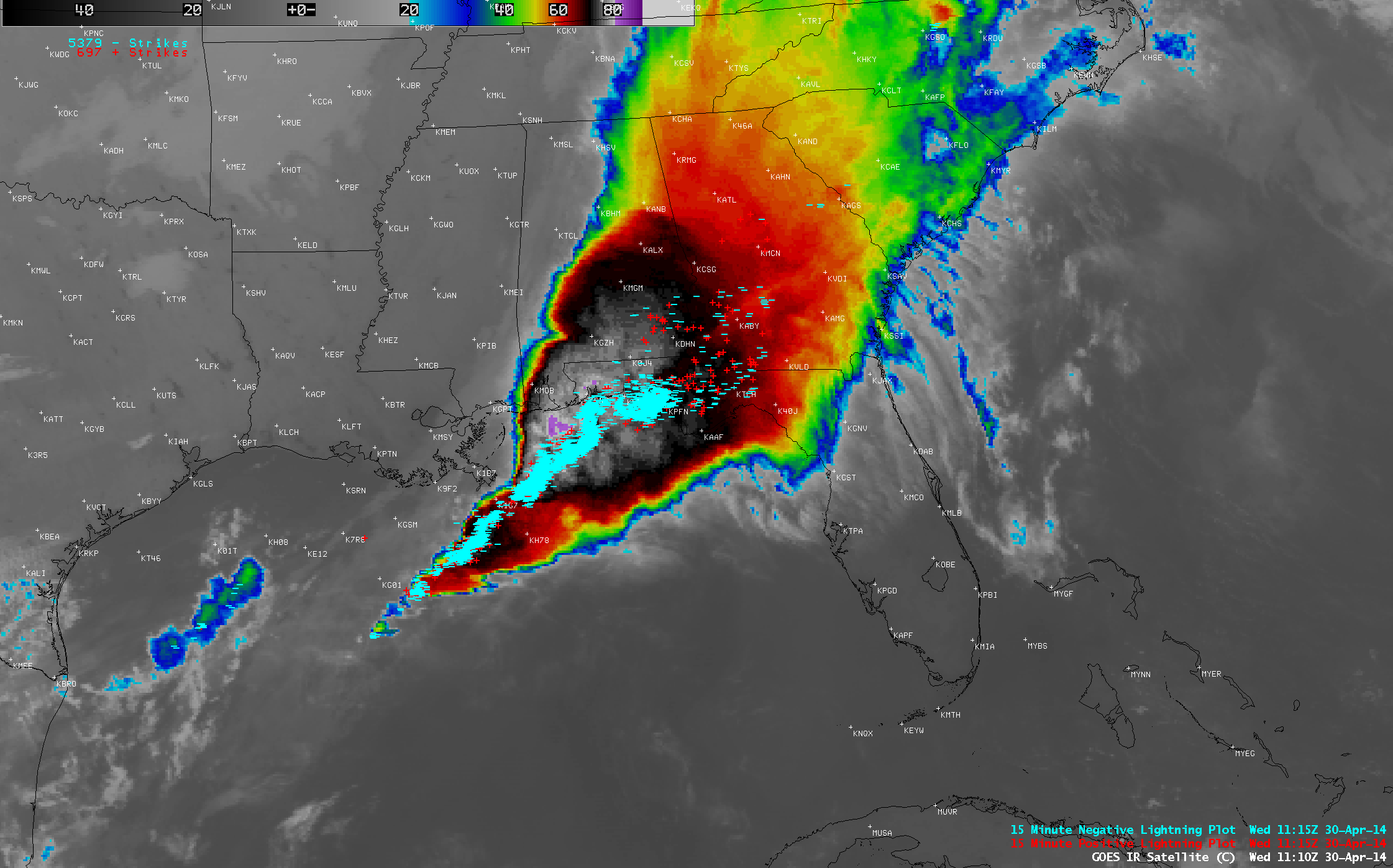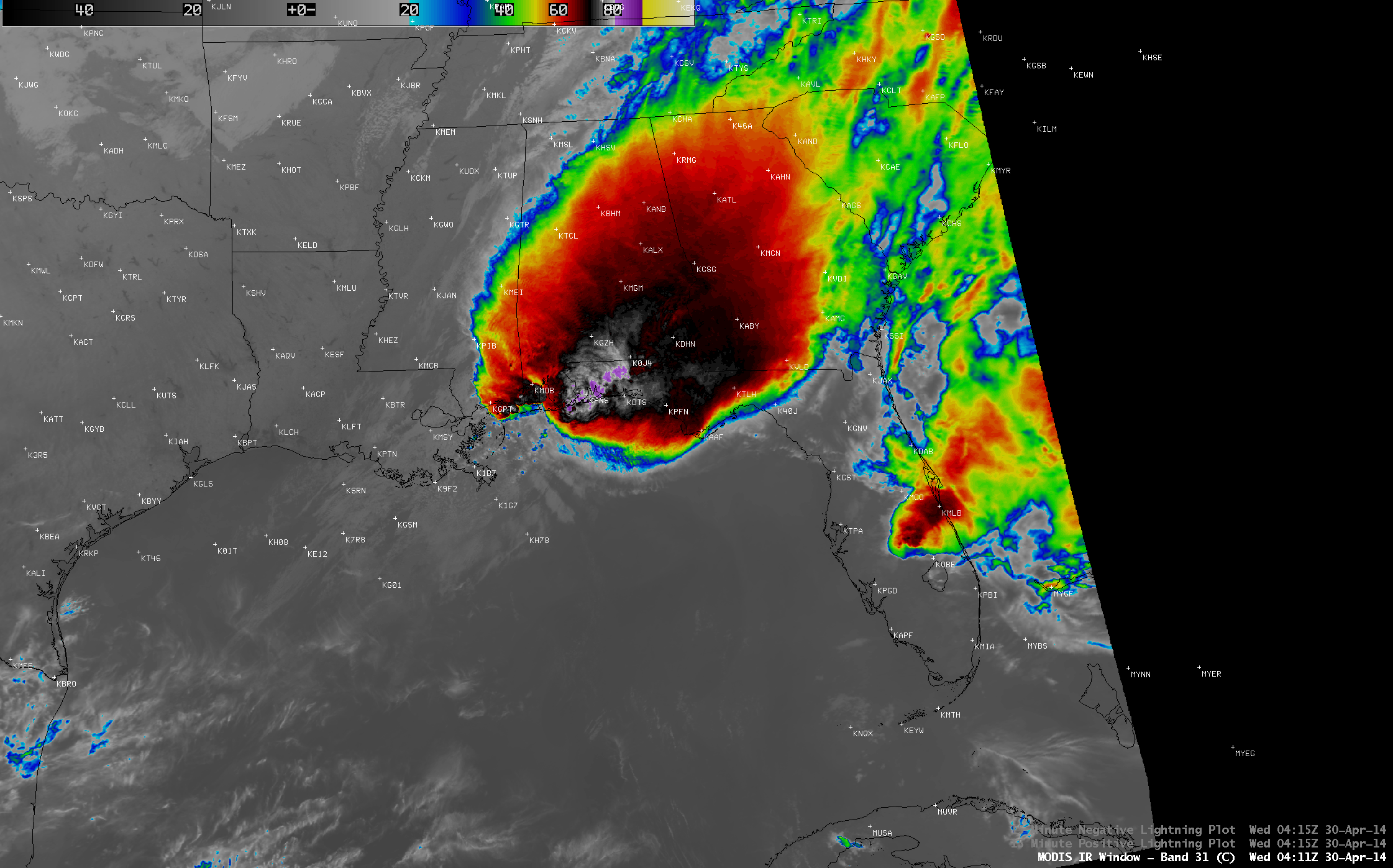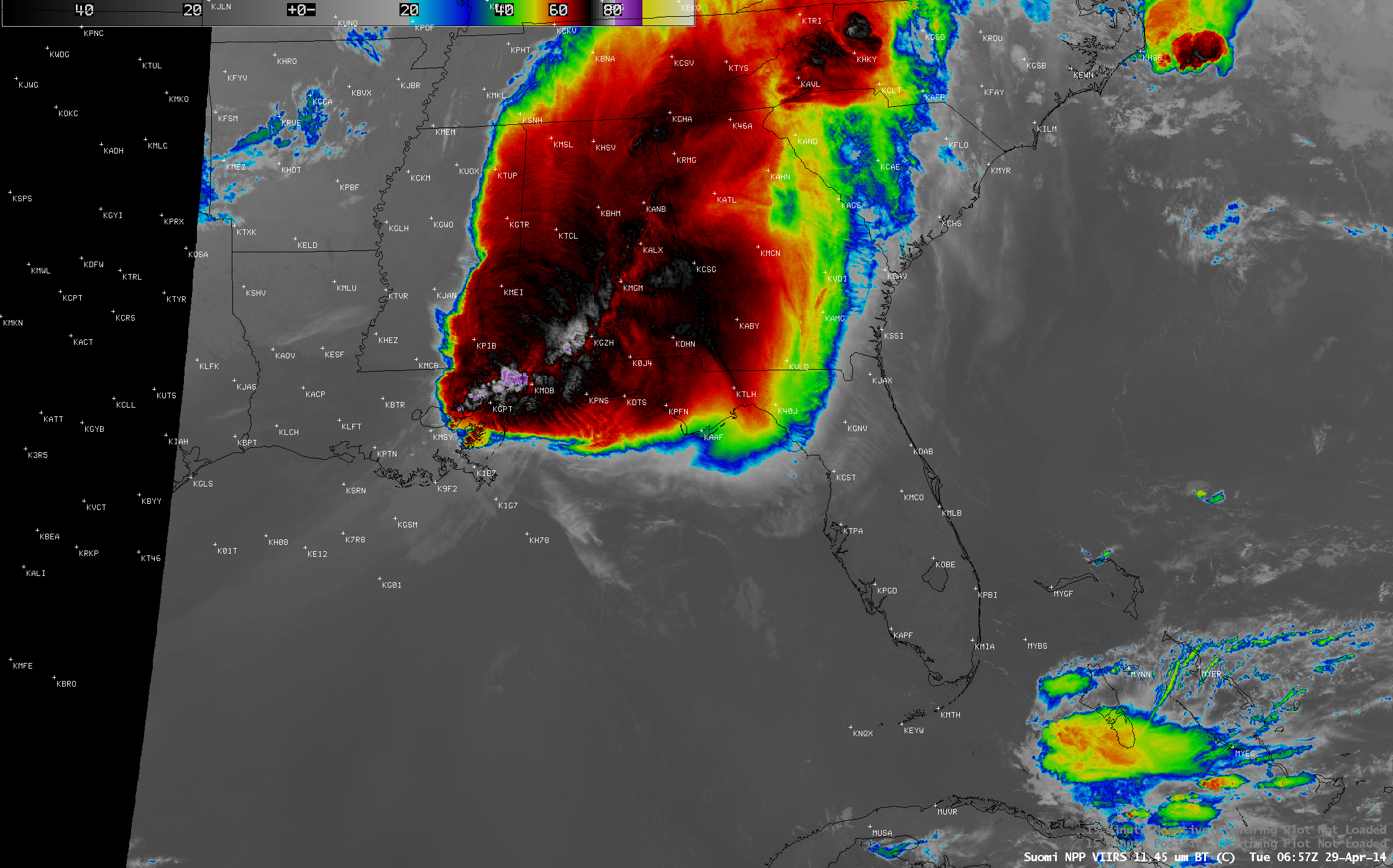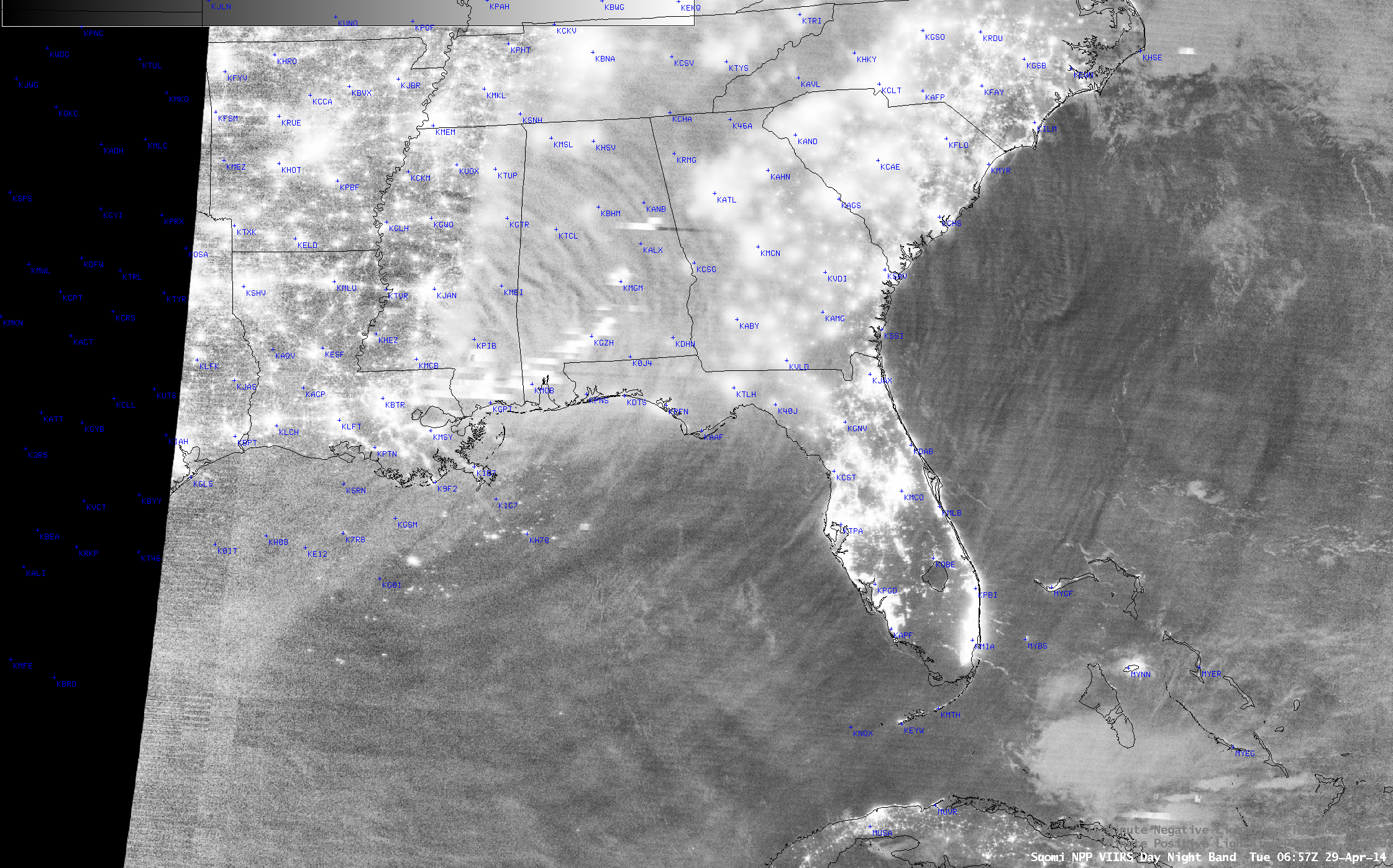Mesoscale Convective System along the Gulf Coast region
A large Mesoscale Convective System (MCS) developed ahead of a slow-moving cold front and moved over the Gulf Coast region of the US on 29 April – 30 April 2014, producing record rainfall totals (WeatherUnderground) and creating widespread severe flooding across parts of southern Alabama and the western Florida Panhandle. The 24-hour WSR-88D Storm Total Precipitation as visualized using the SSEC RealEarth web map server (above) showed swaths of radar-estimated precipitation in excess of 10 inches (violet color enhancement) — but some locations reported actual storm total rainfall amounts exceeding 20 inches (NWS Mobile/Pensacola).
AWIPS images of the MIMIC Total Precipitable Water (TPW) product (below; click image to play animation; Atlantic sector animation) indicated that there were multiple northward surges of TPW values in the 45-50 mm or 1.78-2.0 inch range (darker orange color enhancement) during the 28-30 April time period.
4-km resolution GOES-13 10.7 µm IR channel images (below; click image to play animation) displayed large areas of unusually cold GOES cloud-top IR brightness temperatures (colder than -80º C, violet color enhancement) — in fact, the coldest GOES-13 10.7 µm IR cloud-top brightness temperature seen was -86º C at 12:15 UTC.
This MCS also produced very large amounts of cloud-to-ground lightning (below; click image to play animation), with the highest number of 15-minute interval lightning strikes being 5379 negative and 697 positive at 11:15 UTC.
A 1-km resolution MODIS IR image at 04:11 UTC on 30 April (below) displayed a minimum cloud-top IR brightness temperature of -87º C (darker violet color enhancement).
375-meter resolution (mapped onto a 1-km AWIPS grid) Suomi NPP VIIRS 11.45 µm IR channel images (below) displayed a minimum cloud-top IR brightness temperature of -90º C (dark violet color enhancement) at 06:57 UTC on 29 April.
1-km resolution POES AVHRR 12.0 µm IR channel images (below) exhibited a minimum cloud-top IR brightness temperature of -93º C at 10:12 UTC and 11:07 UTC on 30 April.
Brightness temperatures seen on a single-channel IR image do not always indicate the true cloud top temperature value — but in this case, the -93º C value (which was also seen on the corresponding POES AVHRR 10.8 µm IR image) agreed with minimum value on the POES AVHRR CLAVR-x Cloud Top Temperature product. The POES AVHRR Cloud Top Height product indicated values of 15-16 km in these areas of extremely cold IR temperatures (below).
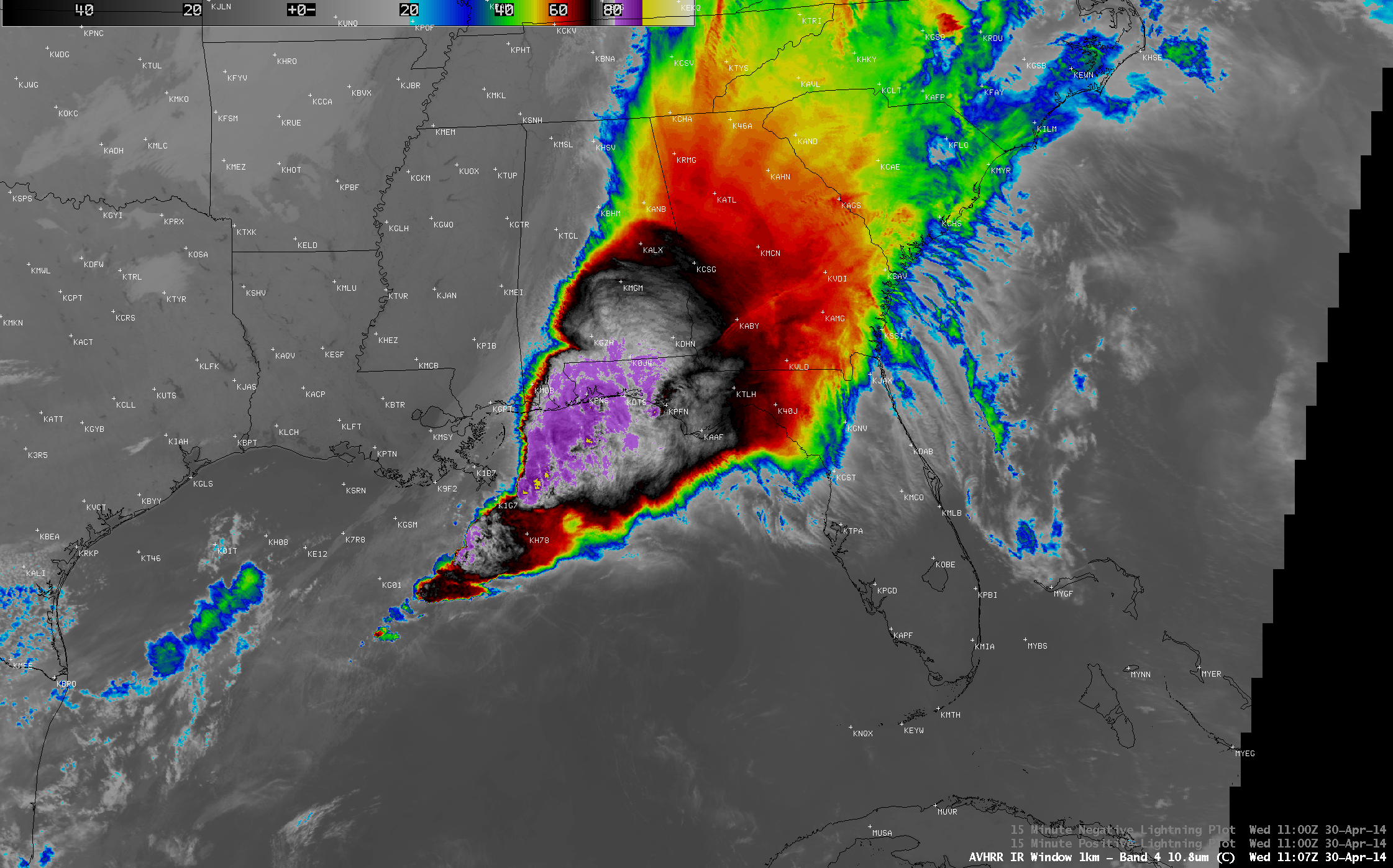
POES AVHRR 10.8 µm IR channel, Cloud Top Temperature product, and Cloud Top Height product at 11:07 UTC
As we have seen with previous cases of strong convection exhibiting intense overshooting tops, nighttime Suomi NPP VIIRS 0.7 um Day/Night Band imagery (below) showed that this MCS produced a large pattern of concentric mesospheric airglow waves that could be seen traveling away from the storm for a considerable distance.


